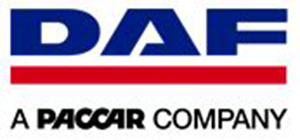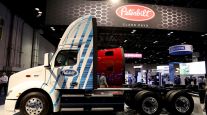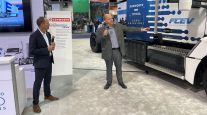Senior Reporter
Paccar Team of Kenworth, DAF Funded for SuperTruck II Research
The Kenworth Truck Co. and European DAF Trucks brands of Paccar Inc. have been selected as the fifth team to participate in the Department of Energy’s SuperTruck II research program, the government agency announced Aug. 30.

Paccar will be awarded $8 million for the project by DOE, the agency said. Paccar will match the cost of the research, just as the other teams have done.

The move comes about one year after DOE selected the four initial SuperTruck II teams. Among that group is Paccar’s Peterbilt Motors Co. truck brand, which is working as a team with independent engine maker Cummins Inc.
The addition of the Kenworth-DAF team comes in response to DOE’s charge from Congress to add worthy projects to the program, said Michael Berube, director of DOE’s Vehicle Technologies Office.
“Per fiscal year 2017 congressional direction, DOE selected an additional technically meritorious project from the funding opportunity announcement of August 2016,” Berube said.
Included in the Kenworth-DAF effort are “several novel engine downsizing and hybridization concepts as well as advanced combustion concepts to improve engine and powertrain efficiency,” Berube said.
The team also is looking at an improved engine waste heat recovery system and at improving powertrain efficiency through the transmission and axle configuration, according to DOE. The project will in addition explore predictive powertrain management for the route used and tractor and trailer aerodynamics improvements and lightweighting.
Neither Paccar nor Kenworth responded to request for comments.
The latest projects under SuperTruck II seek to improve heavy-truck freight efficiency by 100%, compared with a manufacturer’s best-in-class 2009 truck.
Katie Zarich, manager of external communications for Cummins, said the Cummins-Peterbilt project is not attached to the Kenworth-DAF announcement.
The DOE award “is separate from our participation in SuperTruck II,” she told Transport Topics. “Our SuperTruck II program — we would classify it as the Cummins-Peterbilt team — has electrification in the powertrain, but it is a mild hybrid approach. A full electric vehicle would not meet the requirements of SuperTruck II, which would be to meet all of the drivability and functionality requirements of the longhaul baseline vehicle,” she said.
The other teams working on SuperTruck II, according to DOE, include Portland, Ore.-based Daimler Trucks North America, which will develop and demonstrate a tractor-trailer combination using a suite of technologies such as active aerodynamics, cylinder deactivation, hybridization and the electrification of accessories.
Navistar, Inc., which is based in Lisle, Ill., will design and develop a vehicle and powertrain with electrified engine components that can enable higher engine efficiency and a significantly more aerodynamically re-engineered cab.
Volvo Technology of America, which is based in Greensboro, N.C., also will develop and demonstrate a tractor-trailer combination with lightweight cab that achieves the freight efficiency goal using alternative engine designs and a variety of system technologies.
Some of the SuperTruck I research has found its way into trucks, including lightweighting, more aerodynamics and improved brake thermal efficiency — a measure for how well an engine converts the heat from a fuel into mechanical energy, truck makers said during a presentation at the most recent annual meeting of American Trucking Associations’ Technology & Maintenance Council in Nashville in March.
Also as a result of its SuperTruck I research, Volvo Group developed a new piston design, which added “waves” to the piston crown to improve the use of oxygen, which increased fuel efficiency and reduced particulate matter in its heavy-duty engines.



